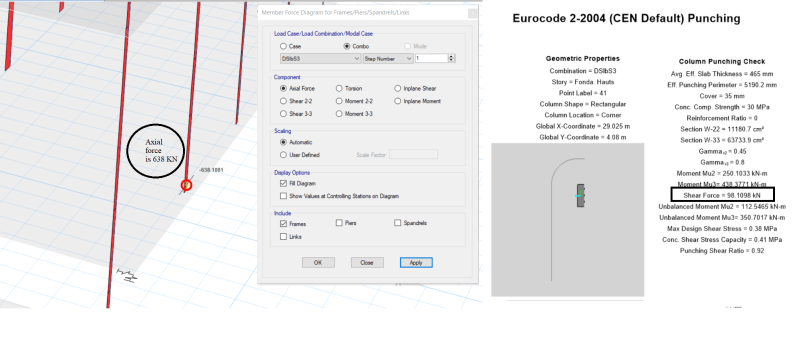T2ioTD
Civil/Environmental
- Feb 4, 2020
- 38
Etabs has given me 'safe' punching ratios, but upon checking the shear value, I noticed it was not equal to the column load of the same combination.
My slab is a raft resting on area spring, for that matter.
Is there is something wrong?

My slab is a raft resting on area spring, for that matter.
Is there is something wrong?

